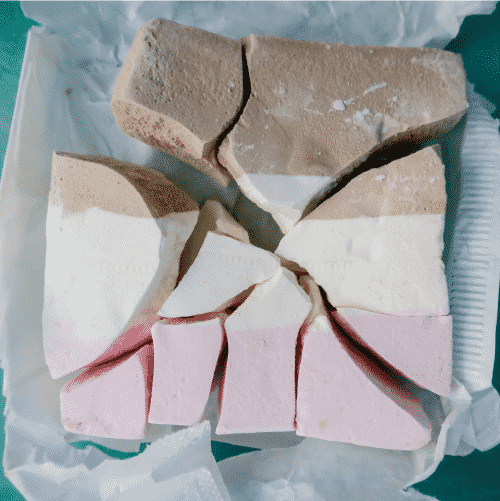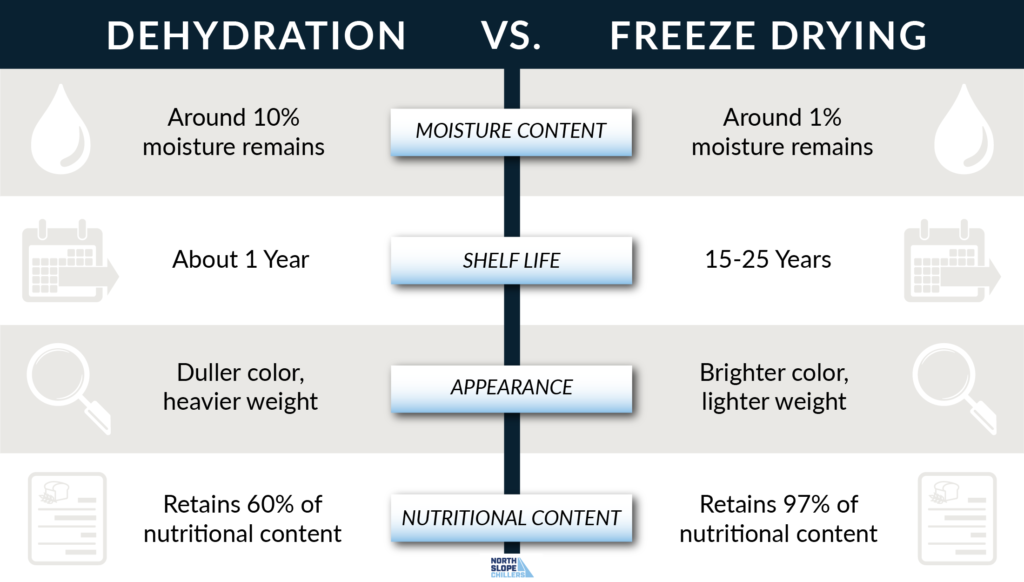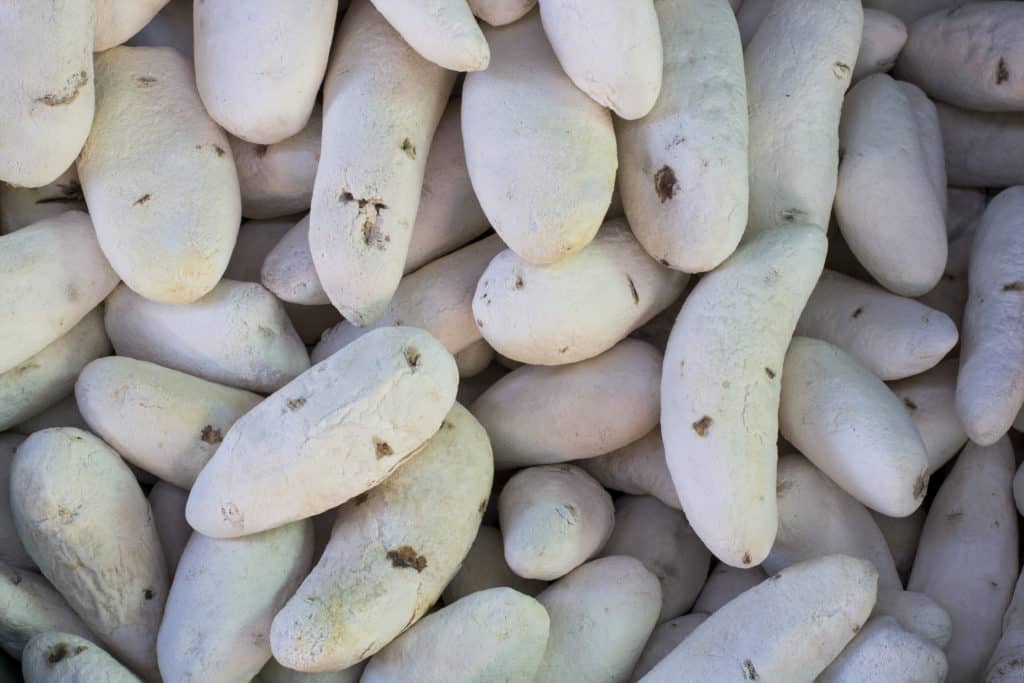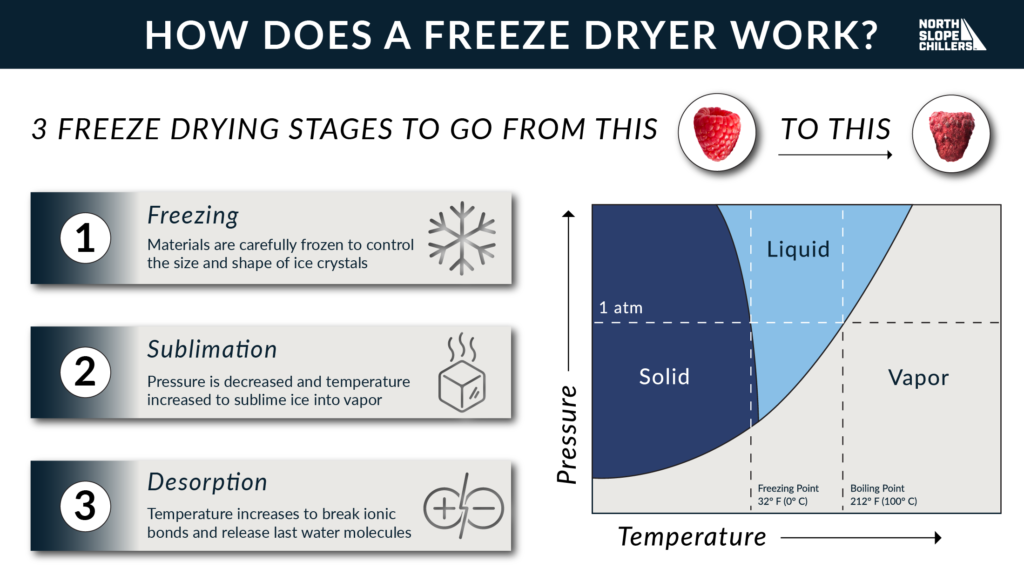Cold and Dry
When most people think about freeze drying, Neapolitan astronaut ice cream bars are usually one of the first things that come to mind. And yes, it’s true that freeze dried foods are a NASA staple. But freeze drying is so much more than that. Let’s take a closer look at the scientific process and applications of modern freeze drying.

What is Freeze Drying?
Simply put, freeze drying is the process of removing moisture from a substance without damaging its basic composition. Moisture not only adds weight but also provides an environment for microorganisms to grow and cause spoilage. Removing moisture greatly increases the shelf life of a substance, as well as reducing its size and weight.
Freeze Drying vs. Dehydration
Freeze drying may sound similar to the dehydration process, but is actually different both in execution and the final product.
Different Execution
The dehydration process turns liquid water into water vapor with the application of some form of heat. Ovens, food dehydrators, or even sun rays are frequently used to evaporate water into the ambient air. This heat, no matter how subtle, causes chemical reactions to occur within the substance being dehydrated. These chemical reactions cause a change in appearance, taste, and smell (such differences are noticeable when comparing a grape to a raisen).
Freeze drying skips the liquid water phase all together. Substances are frozen and then de-pressurized to induce sublimation. Sublimation is different from evaporation because the water will transition directly from a solid ice state to a gaseous state. This process prevents the substance from breaking down on a cellular level and helps retain its composition until it can be re-hydrated.
Different Results

Dehydration removes around 90% of a substance’s water content. Because some moisture remains, bacteria and enzyme activity is only slowed down, but not halted altogether. This moisture reduction does cause some physical changes in color and appearance. The heating process does cause some loss of nutritional value but most foods retain about 60% of their nutrients.
Freeze drying removes almost all moisture, typically around 99% depending upon the substance. Because of this, freeze dried materials have a much longer shelf life than dehydrated materials. The process also helps preserve its original color, appearance, and molecular composition. Freeze dried materials also retain almost all of their nutritional content.
The History of Freeze Drying
The practice of using the freezing process to remove moisture is an ancient practice of Incan communities living in the Andes Mountains of South America. Townspeople would take local potatoes up to extremely high elevations where they were covered with a cloth and left to the nightly freeze. Come daytime, they would walk on top of the cloth to press moisture out of the tubers and then repeat the process to create their staple dish of chuño. Communities along the Andean Plateau in Argentina, Bolivia, Peru and Chile, still practice this natural freeze drying to this day.

A german pathologist named Richard Altmann began experimenting with laboratory freeze drying on plant and animal tissues starting in 1890. His practices largely went unnoticed until around the 1930s when other scientists began to improve the freezing equipment necessary for freeze drying.
The industrial boom of World War II drove freeze drying innovations even further. Because of insufficient cold chain security, penicillin and plasma shipments were freeze dried domestically so they could be shipped to field hospitals at the war front. From that time forward, freeze drying became a staple practice for military field rations and medicines.
Over the years, freeze drying has become an integral practice for the food and bio-pharmaceutical industries. Freeze drying preserves chemical stability and is frequently used to prepare medicinal tablets, vaccines, and other biologicals so they can be more stable at room temperature and transport more easily.
The 3 Stages of Freeze Drying

Freezing
The goal of the freezing process is to turn liquid water into a solid without bursting cell walls. This is accomplished by changing chilling speeds and temperatures in such a way that ensures ice crystals form at the right size and shape to preserve biological materials without damaging them. This freezing process can occur slowly (annealing) or quickly (flash freezing) depending upon the material.
Sublimation (Primary Drying)
During the next phase, pressure within the freeze dryer is reduced to create a vacuum. The temperature is marginally increased so the ice will begin to sublime into a gas. About 95% of the moisture removal occurs during this primary drying period.

Desorption
The final phase of freeze drying involves breaking down the ionic bonds that are holding onto the last remnants of water molecules. In order to break these bonds, the temperature is raised higher than it was during the sublimation phase.
Freeze Drying At Home
Freeze drying has become a very popular practice for DIYers, homesteaders, and food prep enthusiasts. It is one of the best ways to store and preserve food and herbs for long term food storage. Freeze drying is no longer just an industrial process, and many are finding ways to accomplish it at home.
Counter size freeze dryer units are increasing in popularity, as are DIY methods involving stacked trays in deep freezers. Consumers are also using their domestic freeze drying prowess to preserve cannabis as more states have loosened restrictions.
Industrial Cooling Solutions from North Slope Chillers
Here at North Slope Chillers, we specialize in portable industrial strength chillers that fit perfectly into any system without disrupting your current set up. With temperature ranges from 70° F all the way down to -112° F, our chillers can be incorporated into any cooling process. Contact us today at 866-826-2993 or [email protected] to find the perfect chiller for your needs.

